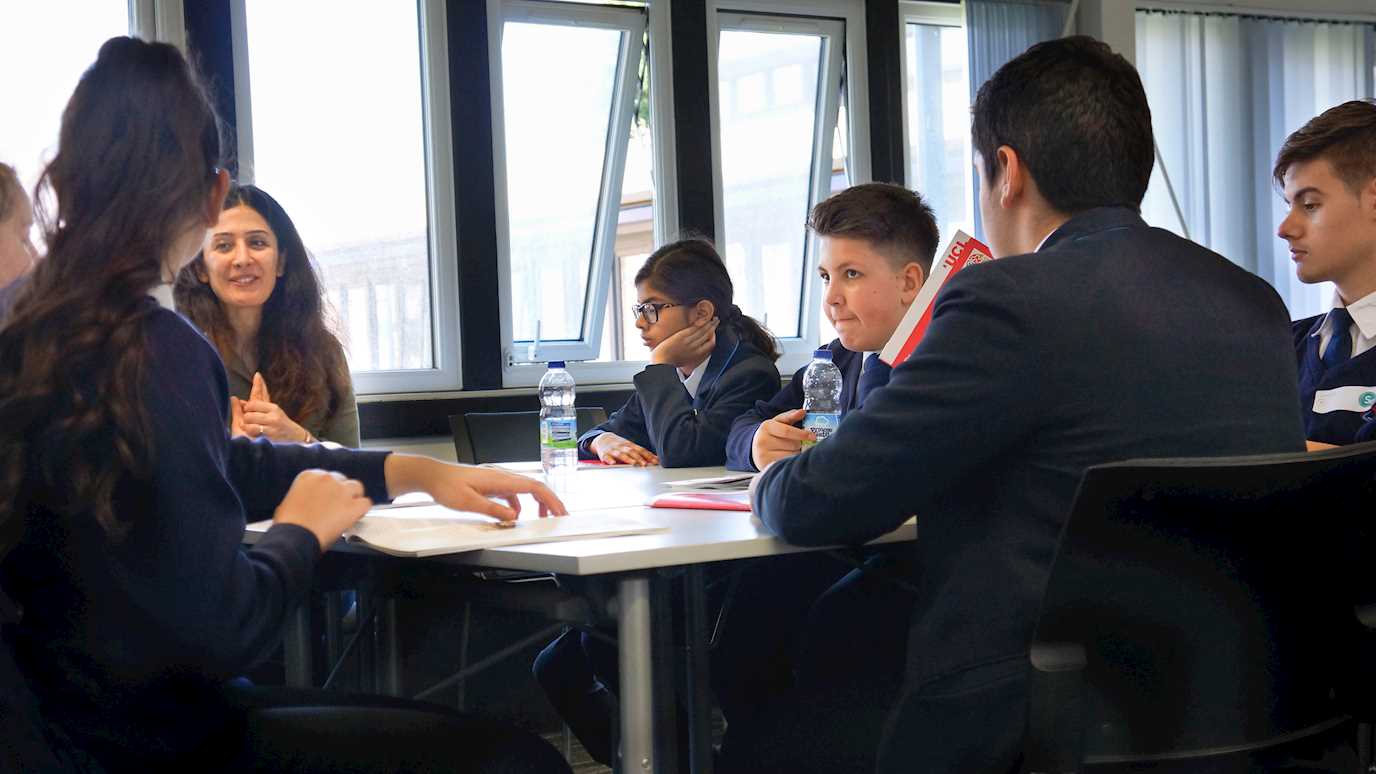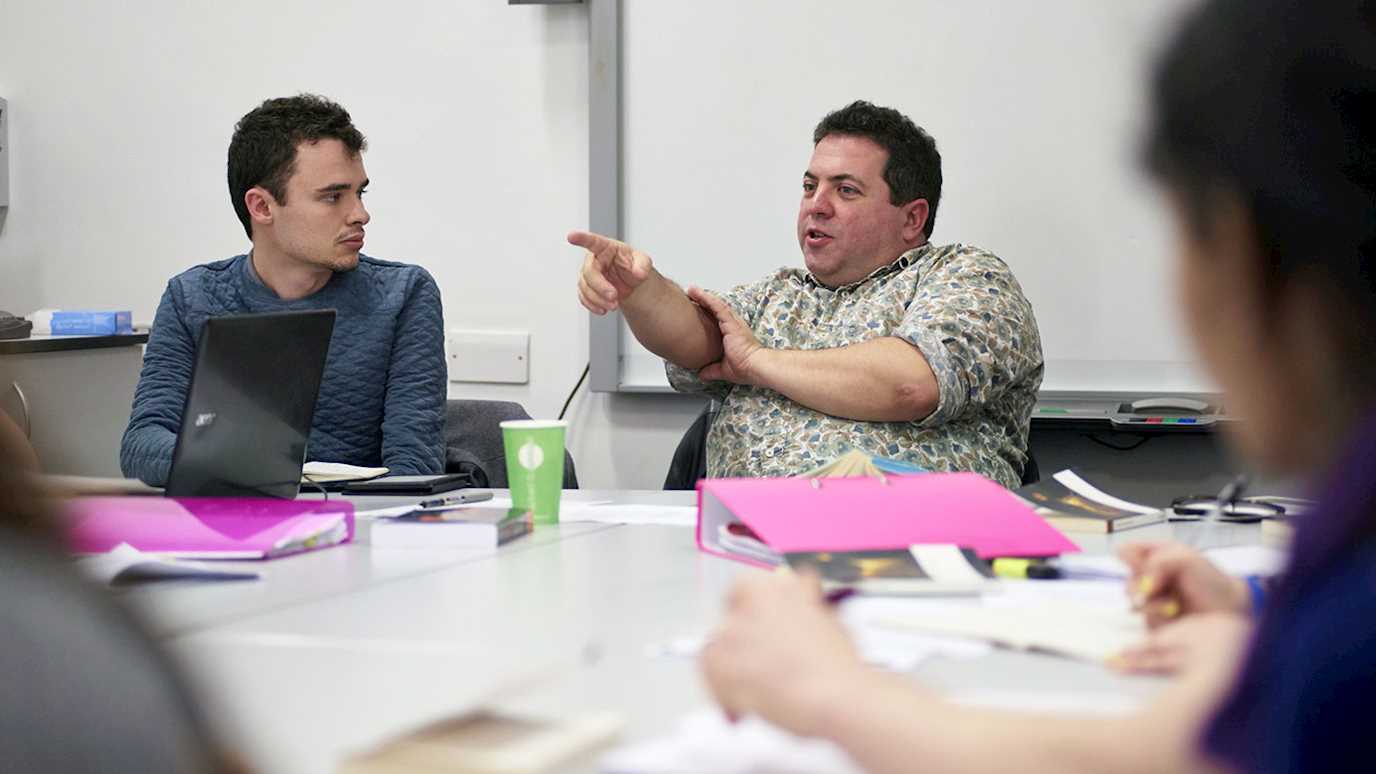Key points
- Atwood said that The Handmaid’s Tale could only include things that had already been done, both in a societal and personal sense
- Atwood chooses to locate the book in America, specifically around Harvard University
- Gilead’s power is maintained through an ongoing ‘state of emergency’
- Women have no power within Gilead, fulfilling a purely reproductive role
- The final section of the book reveals that the narrative has been constructed by academics, based on recordings made by Offred
Suggested passages
1. IV. Waiting Room, Chapter 9, pp. 60 – 63
What does the description of the room suggest about the world in which Offred is living?
What is the significance of her not understanding nolite te bastardes carborundorum
2. VI. Household, Chapter 16, pp. 104 – 106
What does the ceremony reveal about the way that sex is viewed in the Handmaid’s society?
What relationship does the ceremony establish between the female characters?
3. XII. Jezebel’s, Chapter 35, pp. 236 – 240
What does this chapter reveal about Offred’s inability to escape the country?
How and why is her playing with language significant?
4. XIV. Salvaging, Chapter 41, 279 – 283
Why might it be important that Offred reflects on the nature of story telling and the representation of herself as a character?
5. XIV. Salvaging, Chapter 43, pp.290 – 292
What does this brutal killing reveal about the way in which the regime is structured?Why is the revelation of the man’s crimes especially important?
Timeline
1939
Atwood was born
1957
Graduated from High School in Toronto and went on to study at Victoria College in the University of Toronto. Atwood as a writer is very much identified with her Canadian roots
1962
Atwood graduated with an MA from Harvard, and continued on to do doctorate studies. After two years, she terminated her studies, leaving her dissertation on ‘The English Metaphysical Romance’ unfinished
1981
Ronald Reagan was elected as President of the USA.
Reagan attempted to reintroduce God into schools through reversing the Supreme Court’s decision to ban school prayer in 1962.
He also escalated the cold war, building up the USA army and changing foreign policy to a more aggressive stance against Russia. His government also provided aid to anti-communist resistance movements, in an attempt to counter Soviet influenced governments around the world.
Research into the AIDS epidemic was criminally underfunded under Reagan and was only acknowledged by the President after 20,849 HIV-related deaths.
1987
The Handmaid’s Tale receives an Arthur C. Clarke Award, which is given for the best work of science fiction published in the UK that year. Atwood has contested this definition of her work, stating that she writes ‘speculative fiction’ i.e. books that are based on things that humans have done or are in the process of doing. She has also called this speculative fiction ‘social science fiction’.
1990
Harold Pinter writes the screenplay for the film adaptation of The Handmaid’s Tale
2000
John Dryden produces an adaptation of The Handmaid’s Tale for Radio 4
2004
Atwood conceived of a technology that would allow her to sign books without actually being physically present. She founded the company, Unotchit Inc to develop and produce the LongPen.
Further reading
- Dominick M. Grace, ‘“The Handmaid’s Tale”: “Historical Notes” and Documentary Subversion’ in Science Fiction Studies, Vol.25, No.3 (Nov 1998), pp.481 – 494
This article focuses on the ways in which the ‘historical notes’ at the end of the novel call for a re-evaluation of the narrative up until that point. The notes are particularly important for undercutting or defying our expectation of the dystopian novel. The majority of science fiction, and speculative writing, introduces the authoritative, historically established or academically enshrined voice, in order to lend validity and credibility to the narrative. In this case, Atwood makes use of the ‘historical notes’ to force the reader into questioning the story that they have been told. That the academic voice only appears at the end of the text serves as a radical rupture from the first person narrative, inviting the reader to question rather than accept the authenticity of Offred’s account.
The ‘historical notes’ seem to suggest that society has returned to a state resembling that of pre-Gilead. However, there is still some evidence of gender inequality, with Pieixoto making jokes about the sexual allure of one of the female colleagues. This demonstrates the way in which linear models of history do not work; society has not progressed beyond Gilead. Rather, it has returned to a social model that predates the extremity of Gilead, but in doing so, has maintained some of the trappings of the totalitarian state.
The present tense of the book enacts this complicated relationship with temporality. Offred speaks exclusively within the present tense, and even as she describes the past, it holds such immediacy and relevance that it too seems to be unfolding within the moment of telling. In accordance with this, Offred foregrounds the uncertainty of her own narration. Moira and Luke’s fates are both imagined, and reimagined, while Offred is highly aware of the way in which she is self-presenting through the story, at times wishing that she could appear to be better than she is. This suggests that Offred is attempting to find the truth in multiplicity. Recognising that her present is difficult to construct, she tells stories, acknowledging their centrality to her survival and escapism. This contrasts completely with the way the academics, and Pieixoto especially, attempt to restrict the narrative, making it clean, progressive, and univocal. Pieixoto sees history as immutable, and truthful, comprised of facts. - Peter G. Stillman and S. Anne Johnson, ‘Identity, Complicity, and Resistance to the Handmaid’s Tale’ in Utopian Studies, Vol. 5, No.2 (1994), pp.70 – 86
Stillman and Johnson make an argument for the way in which self and other, subjectivity and objectivity, are constructed through the relationship between Gilead and Offred. While Pieixoto laments the lack of detail in Offred’s narrative, it is actually the vagueness and subjectivity of her account that affords the reader insight into the personal experience of a woman reduced to her reproductive capacity.
Gilead’s structures of power make it very difficult for women to hold on to a sense of self. Even in its nascent period, the state began to deprive women of their rights to independent finances, jobs, and even, literacy. This deprivation continues as the regime establishes itself, with the Handmaids following prescriptive and isolating behavioural patterns. Handmaids are not allowed to talk unless it is at specific public events, with approved Gilead epithets. Conversing with people of different social ranks is prohibited, while interaction with men is limited to the monthly impregnation ritual. The Handmaids, thus, spend many lonely days and nights in their own company. This lack of interaction with others destabilises the women’s identity, denying them the possibility of any meaningful relationships that might allow the self to flourish.
In spite of Offred’s central position within the narrative, and significance in the ‘historical notes’, she does not resist Gilead’s power. In fact, she regularly capitulates to others’ power, including that of Serena Joy, The Commander, and ultimately, Nick. Offred agrees to sexual relations with Nick at Serena Joy’s behest, just as she attends Jezebel with The Commander. Even when Offred is having a relationship with Nick, she remains relatively passive, totally intoxicated and subordinate. These transgressions do not emancipate Offred, but instead, enmesh her further in the structures of sex and power that form the basis of Gilead.
Atwood places this lack of resistance in dialogue with two very strong female characters: Offred’s mother and Moira. Offred openly admits that prior to the regime, she did not once question her right to chose. In essence, she took her autonomy for granted, in ways that her mother and Moira did not. While Offred initially mocked both women for their ‘unnecessary’ feminism, they both become symbols of rebellion to her when Gilead takes hold. Their rebellion serves as a strong contrast to Offred, who lacks the strength necessary to resist and protest against Gilead.
The final contrast in terms of selfhood and resistance is between the academics and Offred. The scholars claim to be impartial and objective, while Offred continually foregrounds her subjectivity. Stillman and Johnson suggest that it is this pretence of objectivity that is most dangerous: the academics convene and laugh over the ingenuity of two men who established a society that subordinates women. Though the immediate dangers of Gilead have passed, the fact that the academics are able to laugh over its existence, demonstrates their complicity in the past regime. At the end of the conference, when Pieixoto asks if there are any questions, he is not challenged, but instead greeted with applause. The academics, much like Offred, defer to an authority figure. - Dorota Filipczak, ‘Is There No Balm in Gilead? – Biblical Intertext in the Handmaid’s Tale’ in Literature and Theology, Vol.7, No.2 (1993), pp. 171 – 185.
Filipczak’s article focuses on the place of the bible within Atwood’s The Handmaid’s Tale, stating that Gilead’s relationship with the text is a complicated one. The bible is an actual physical presence within the households of Gilead; locked in a wooden box and only accessible to a few, it becomes a totem of the wider society’s totalitarian system.
The Handmaid’s Tale is simultaneously a literalizing of the way in which the bible can be misread. One could argue that fundamentalist Christian understanding suppresses the interpretative potential of the text, while others might suggest that the bible itself shuts down interpretative possibility. Gilead, as a place, is referred to on a number of occasions within the bible. Each usage suggests a slightly different possibility for Gilead as a symbol within Atwood’s The Handmaid’s Tale. The society’s slogan ‘There is a balm in Gilead’ is a distortion of Jeremiah’s ‘is there no balm in Gilead?’. The former refers to the fact that the Gilead established within The Handmaid’s Tale is adopting a kind of moral and ethical superiority, which might save the world from the ongoing pain of its sins, while the latter laments moral decline which cannot be salvaged.
In Genesis, Gilead works as a symbol of transition for Jacob when he tries to escape from his father-in-law, Laban. Before fleeing, Jacob’s wife Rachel steals idols, called teraphim, as a reminder of her home. When Laban catches up with Jacob and his party, he demands that whoever stole the teraphim is put to death. Luckily, Rachel has the idols hidden within her dress and so is not discovered, allowing Jacob and Laban to part peacefully. After this encounter, safely in Gilead, Jacob asks his people to give up their false idols and teraphim in order to demonstrate loyalty to God. Gilead in The Handmaid’s Tale is also haunted by the teraphim of the past. Much like Rachel, the commanders hold onto the idols of a previous society. However, while Rachel typifies feminine weaknesses, the Commander’s ability to hold on to teraphim demonstrates their power and strength.
The Book of Hosea, in contrast, is suspicious of Jacob, suggesting that he spawned sons who engaged in idolatrous worship. The Book also alludes to Baal Peor, where Israelite men defiled themselves through idol worship and sacrilegious intercourse with Moabite women in Gilead. The Handmaid’s Tale and its fertility cult can be seen as reflecting the Baal Peor rite. God curses the Israelites for their defilement, condemning them to infertility, which again is reflected in Gilead’s obsession with childbearing. The Book of Hosea also suggests that Gilead is ‘tracked with blood’ on account of a murder committed there by priests. Schechem, associated with a Mosaic convent, was in direct competition with the official sites of worship, Bethel and Dan. To dampen this competition, the priests of Gilead killed pilgrims, ensuring that they never reached their final destination. Atwood’s Gilead similarly uses priests to supervise mechanisms of terror; anyone who deviates from the law is deported or killed.
However, the Book of Numbers shows Gilead as a fertile resting place for Israelites heading to the promised land. The tribes of Reuben and Gad choose to set up camp there for their wives and children, before continuing on to battle alongside Moses. Moses allows the tribes to build communities, but warns them that absence from battle will constitute a breach of divine order. In this case, Atwood’s Gilead closely resembles that of the Book of Numbers. It draws on the rhetoric of war, risk and personal sacrifice, but remains in a liminal state of emergency while preparing for the proper rebirth of civilization. - Stephanie Barbé Hammer, ‘The World as it will be? Female Satire and the Technology of Power in The Handmaid’s Tale’
This article makes a case for the reading of The Handmaid’s Tale as satire, as opposed to science or speculative fiction. Atwood makes use of a number of tropes of satire, including ‘formal disguise’, where the novel initially seems like a simple narrative, and then postures as autobiography. Other tropes include the static plot, with little progress, and a straight forward protagonist with common sense, appearing to be just an average woman stuck in a dystopian nightmare. Finally, the novel has a very clear plot target: evangelical Christian fundamentalism.
The most obvious satire of the book is that Gilead claims to be a Christian society, but not a single person there is devout. The second is that Offred’s own narrative seems simple, but ultimately she becomes caught between two men in what appears to be a more romantic heroine plot. She must choose between the old, kindly, patriarch, or the younger and more dangerous, working class man. However, her reliance on both means the choice becomes a grisly parody of romantic conundrum.
Offred is also a satirical figure. In her previous society, she is completely passive, doing little other than waiting for Luke to leave his wife. In Gilead, she is the nightmarish extension of her former self. Atwood ironizes the gap between freedom and imprisonment, because in reality, Offred experiences both states similarly. While she is sympathetic as a protagonist, on account of her everyday nature, Offred is also unsympathetic in that she maintains passivity, refusing to resist Gilead.
Gilead is not technologically advanced, at least not in a machinery sense. However, all members of the society are caught up in surveillance and counter surveillance. The punishment for any type of dissent, as well as being continually watched, can actually be seen as a radically modern technology of social control. Much like Offred becoming an extension of her former passive self in Gilead, the society is actually just an exaggeration of what is already taking place in the USA in terms of power and surveillance.
Self-recognition is vital to the operations of satire. Offred is at least aware of her passive self, while the academics in the ‘historical notes’ are not. Atwood’s final note, then, is for us as readers to be careful of the imperceptible technologies of power, as well as the unconscious imprisonment of others and ourselves.
Web links
- theguardian.com/books/2012/jan/20/handmaids-tale-margaret-atwood
‘I made a rule for myself: I would not include anything that human beings had not already done in some other place or time, or for which the technology did not already exist.’ - theverge.com/2014/12/20/7424951/does-the-handmaids-tale-hold-up-dystopia-feminism-fiction
How relevant is The Handmaid's Tale now? - youtube.com/watch?v=VMrz_ivl8jo
‘I don’t do prophecy’, Margaret Atwood on Religion
Other works
- It would be useful to read Atwood’s other speculative fiction, including Oryx and Crake (2003), The Year of the Flood (2009) and MaddAdam (2013). Whilst these are much more environmental and scientific-progress orientated, they engage with some of the same social themes as The Handmaid’s Tale.
- Atwood’s early work The Edible Woman (1969) offers an interesting insight into women’s relationships with their own bodies, as well as food.
- The author is currently collaborating with Renée Nault, an illustrator, to turn The Handmaid’s Tale into a graphic novel.
























